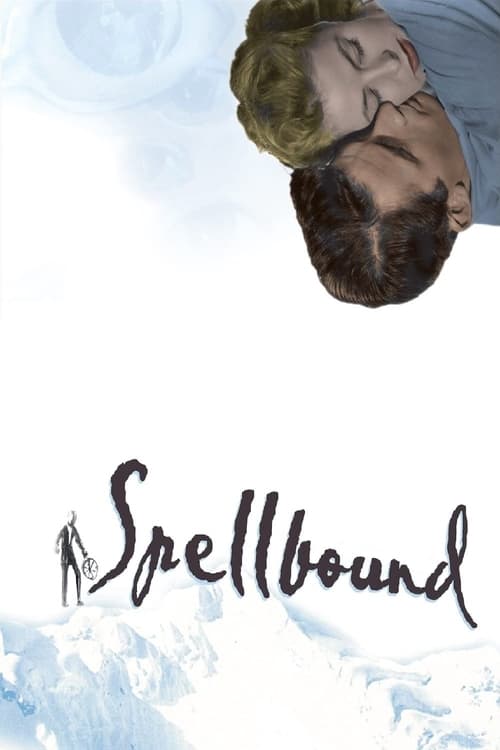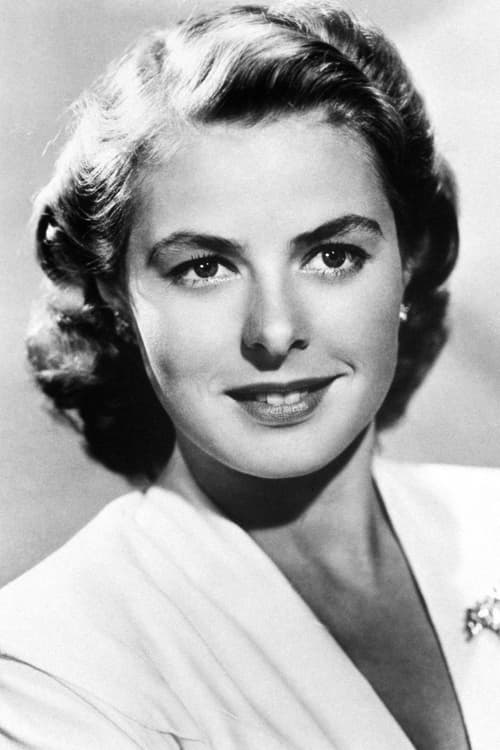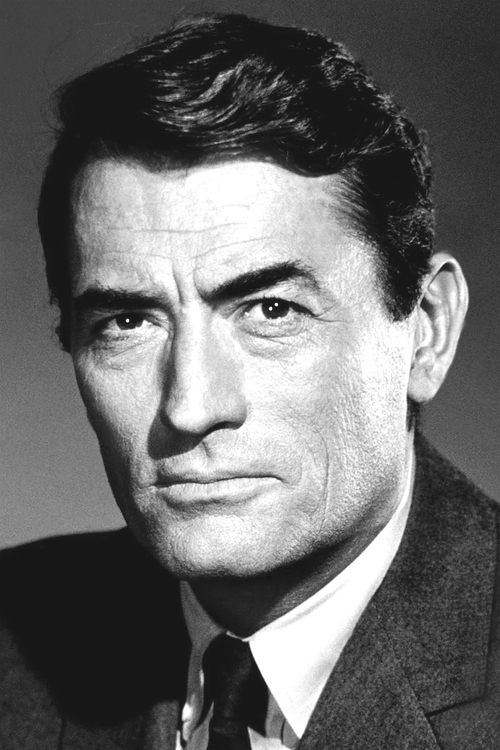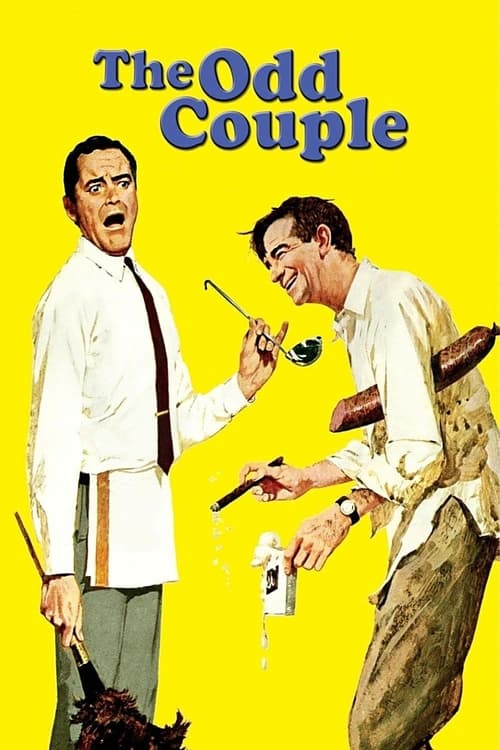
Spellbound
When Dr. Anthony Edwardes arrives at a Vermont mental hospital to replace the outgoing hospital director, Dr. Constance Peterson, a psychoanalyst, discovers Edwardes is actually an impostor. The man confesses that the real Dr. Edwardes is dead and fears he may have killed him, but cannot recall anything. Dr. Peterson, however is convinced his impostor is innocent of the man's murder, and joins him on a quest to unravel his amnesia through psychoanalysis.
Quotes from Movie Spellbound
Sound Tracks from Spellbound by Miklós Rózsa
Laura
Laura by David Raksin, Theme connected to the love story between the main characters
Brahms' Lullaby
Brahms' Lullaby by Traditional, Played during the dream sequence
Download App
Memorable Scenes from Movie Spellbound
Dr. Murchison's Reveal
In a tense moment, Dr. Murchison reveals his troubling past to Dr. Constance Peterson. The build-up shows Constance’s growing concern about Murchison's erratic behavior. Just as Murchison unravels the truth of his troubled history with trauma and mental illness, the room grows silent. The cinematography here increases its intensity with close-ups of their faces, highlighting the fear and urgency of the moment. After this revelation, the dynamics between the characters shift as Constance becomes more invested in helping him. This moment illustrates the themes of fear and understanding mental health, leaving viewers with a sense of empathy and concern.
Context: Constance is trying to understand Murchison's strange actions and emotions, which contributes to the film's exploration of psychological themes.
The Dream Sequence
The vivid dream sequence featuring surreal visuals displays a portal into the subconscious mind. As the tension builds, the audience is taken on a ride through haunting imagery that reveals the characters' anxieties and fears. The pivotal moment comes when Constance realizes the key to Murchison's troubled psyche. The use of unexpected colors and dreamlike behaviors pulls the viewers into the chaos of Murchison's mind. After this sequence, both Constance and the audience are left questioning reality and the truth of one's psyche. It evokes feelings of anxiety and intrigue as we explore the boundaries of consciousness and dreams.
Context: This sequence is essential to the plot as it reflects the complex nature of unconscious fears and desires, shaping the narrative.
Constance's Commitment
In a heartrending moment, Constance makes a firm decision to support Murchison, despite the risks involved. The build-up occurs as she weighs the moral and ethical implications of her choice. The exact moment of commitment is a quiet yet powerful declaration she makes, showcasing her determination and emotional investment. This scene is captured with stillness that contrasts with the rapid pace of the surrounding events. After this decision is made, the relationship between Constance and Murchison deepens; it also reinforces her characterization as a compassionate figure. Viewers feel uplifted yet anxious about the hurdles they might face.
Context: This decision is a turning point for Constance’s character as it highlights her dedication to understanding and helping Murchison.
The Climax Reveal
The tension peaks during the dramatic climax when the truth behind Murchison's trauma is finally revealed. The atmosphere is heavy; the build-up shows growing unease among the characters. The pivotal moment arrives with Murchison’s frantic recounting of his past, delivered in a mix of emotional breakdown and clarity. The visuals are frenetic, with quick cuts and close-ups to emphasize Murchison's mental struggle. In the aftermath, the audience is left with an understanding of how past trauma shapes present actions. This scene provokes a deep sorrow and an understanding of the complexity of mental health.
Context: This overarching reveal anchors the film's exploration of psychological suffering and provides clarity to the preceding mysterious events.
The Final Confrontation
In a climactic showdown, Constance confronts Murchison about his fears. It follows a tense build-up wherein she struggles between fear for her safety and her compassion for him. The pivotal moment occurs as she bravely faces him, compelling him to confront his own demons. The visuals become stark as the light changes, emphasizing inner turmoil. Following this confrontation, there is a shift in their dynamic; Murchison begins to take steps towards healing. Viewers experience a whirlwind of emotions, feeling both trepidation and hope.
Context: This moment encapsulates the central conflict of fear versus love, illustrating how confronting one’s issues is crucial in healing.
The Hospital Scene
The emotional weight of a pivotal hospital scene emphasizes vulnerability. Constance visits Murchison after he has been institutionalized. The build-up includes her inner conflict about whether or not she can still save him. The exact moment of connection happens when Murchison, in a weak state, reaches out for her hand; the visuals portray their deep connection as they both tear up. This intimate moment changes the course of their relationship, bringing a sense of calm and hope. Viewers feel a mix of sadness and warmth, rooting for their rekindled bond.
Context: This scene paints a vivid picture of the mental health struggle and the support systems needed to confront them, highlighting its emotional core.
The Therapy Session
A pivotal therapy session unfolds where deep-seated fears are explored. The build-up occurs with Constance nervously leading Murchison through his memories. The pivotal moment peaks when Murchison experiences a breakthrough, recounting a traumatic event with raw honesty. The visual framework artfully juxtaposes his expressions with the psychological turmoil that lies beneath. In the aftermath, there’s a vital shift in Murchison’s character towards healing. This scene evokes a powerful sense of catharsis for spectators, accentuating the importance of confronting past traumas.
Context: This scene is vital as it illustrates the therapeutic process, which resonates with wider audiences grappling with mental health.
Constance's Jeopardy
As the plot thickens, Constance finds herself in a precarious position after Murchison’s breakdown. The build-up here highlights her ongoing commitment despite growing danger. The pivotal moment occurs when she is cornered, demonstrating her determination and bravery to obtain the truth. The visuals focus on her fearful yet resolute expressions, heightening the intensity. After this scene, it alters her perception of Murchison and the risks involved. Audiences feel anxiety ramping up, drawing sympathy for Constance's predicament.
Context: This moment escalates the stakes for Constance's safety and the complexity of her relationship with Murchison, underscoring the risks she’s willing to take.
The Snowy Escape
In a breathtaking moment, the characters flee to a snowy landscape, symbolizing both escape and uncertainty. The build-up shows growing tension as Murchison fears being discovered. The pivotal moment arrives when they find solace in the white landscape, the visuals contrasting the purity of snow with their troubled past. The aftermath brings a sense of calm but also the understanding that danger still looms. This scene elicits feelings of hope marred with uncertainty, resonating with the idea of seeking peace.
Context: The contrasting imagery reflects their internal journeys and the possibility of finding peace amidst chaos.
The Memory Flashback
A crucial memory flashback propels the narrative forward, revealing key information about Murchison's past. The build-up evolves from quiet curiosity to shocking realizations. The pivotal moment hits hard when Constance witnesses a traumatic event through his eyes. Visually, the transition into the memory is marked by a distinct shift in color and focus. Following this, Constance's understanding of Murchison deepens significantly. Viewers feel a jolt of shock and empathy, bridging the gap between the characters.
Context: This scene enriches the story, providing context for Murchison's ongoing struggles and the reasons for his psychological state.
The Romantic Interlude
In a tender scene, Constance and Murchison share a moment of vulnerability that transforms their relationship. The build-up is filled with uncertainty as both characters navigate their feelings while confronted with immense pressure. The pivotal moment strikes when they share a heartfelt kiss, emphasizing the connection forged through their trials. The visuals shift to soft lighting, encapsulating the emotional warmth between them. After this moment, their relationship is instantly fortified. Audiences feel joy and relief, celebrating love amid adversity.
Context: This scene underscores the theme of love as a catalyst for healing, showcasing how emotional bonds can form in challenging times.
The Resolution Dialogue
In a defining conversation, Constance and Murchison face the reality of their situation. The build-up indicates a mixture of fear and hope as they discuss their future. The pivotal moment occurs when Murchison confesses his fears but also expresses gratitude for Constance’s unwavering support. The dialogue is punctuated with a focus on their facial expressions, symbolizing the weight of their emotions. After this conversation, there is a holistic shift in both characters, hinting at a hopeful future. Viewers experience a blend of relief and optimism.
Context: This moment encapsulates the film's overarching message about love, courage, and the strength found in vulnerability.
The Marionette Performance
The eerie marionette performance serves as a metaphor for control and manipulation. The build-up hints at the troubled psyche of Murchison as it parallels his mental battles. The pivotal moment occurs when the puppeteer loses control of the strings, symbolizing Murchison's feeling of being overwhelmed by his past. The impactful visuals and unsettling atmosphere leave audiences gripping their seats. In the aftermath, it evokes thoughts on the nature of one’s control over their life. This scene resonates with those who understand the struggle against external and internal forces.
Context: The performance draws a parallel to Murchison's struggles, enriching the film’s psychological commentary.
The Confession Scene
A powerful confession scene where Murchison finally admits the truth about his past unfolds. The build-up features tension with Constance interpreting Murchison's troubling actions. The pivotal moment strikes when Murchison opens up, revealing buried emotions and secrets. The visuals focus intensely on his eyes, mirroring his pain. The aftereffects of this confession allow a breakthrough for Murchison, and Constance’s understanding deepens significantly. Viewers are left with feelings of heartbreak and empathy as they witness the heavy burden of repression.
Context: This moment is crucial both for character development and the film’s exploration of themes surrounding trauma and mental health.
The Epiphany
A calm yet powerful epiphany emerges when Constance realizes the true essence of Murchison's struggle. The build-up indicates her journey as she pieces together clues regarding his trauma. The pivotal moment hits hard as she shares her realization with him, declaring that it’s the fear of being vulnerable that maintains his shackles. The visuals featuring muted colors contrast with the weight of her words. This revelation creates a major impact—prompting both characters to face their vulnerabilities head-on. Audiences experience a mix of catharsis and hope.
Context: This epiphany binds the emotional threads throughout the film, highlighting the importance of confronting one’s insecurities for healing.
The Climactic Showdown
The tension reaches a boiling point during the climactic showdown between Murchison and his inner demons. The build-up comes to a head as his mental state deteriorates. The pivotal moment occurs when he chooses to confront his fears instead of fleeing—an act of defiance against his trauma. The visuals are chaotic, filled with strong contrasts and rapid editing that captures the urgency of his battle. After this, the audience is left breathless, witnessing a character who embraces his struggles. It evokes a mixture of dread and exhilaration.
Context: This scene serves as the film’s emotional climax, showcasing the necessity of confronting one's past for personal growth.
Before the Prelude
In a haunting scene before the main confrontation, Constance reflects on her journey. The build-up reveals her inner conflict as she prepares for the challenges ahead with Murchison. The pivotal moment occurs when she openly acknowledges her fears and steadfast commitment to him. This is captured through powerful visuals of her in solitude with faint lighting around her. After this contemplative moment, viewers connect more deeply with Constance's character. The emotional weight of hope amidst uncertainty resonates strongly with audiences.
Context: This introspective scene lays the groundwork for the impending climax, emphasizing themes of courage and sacrifice.
The Supportive Encounters
Small but powerful interactions with fellow staff members serve to showcase the importance of support during recovery. Each build-up shows the growing concern within the community about Murchison’s stability. The pivotal moment arises anytime characters reach out with sincerity and care, offered through dialogue and small gestures. The visuals are warm and inviting, highlighting community bonds. In the aftermath, there's an undeniable shift towards hope as the power of collective support shines through. Audiences are left feeling a sense of connectedness and encouragement.
Context: These moments reinforce the theme of community and compassion, emphasizing the strength found in unity.
The Letter of Hope
In a quietly impactful moment, Constance receives a heartfelt letter from Murchison reflecting his journey. The build-up comes from the emotional distance they’ve experienced throughout the film. The pivotal moment strikes when she reads his words, showcasing his profound growth. The visuals are serene, with soft lighting creating an intimate atmosphere. Following this scene, there’s renewed hope that intertwines their narratives, hinting at a path forward. Viewers feel a surge of warmth and joy, inspired by the redemptive power of love.
Context: This moment encapsulates the theme of hope as a guiding force, closing the film on a note of optimism.
Download App







